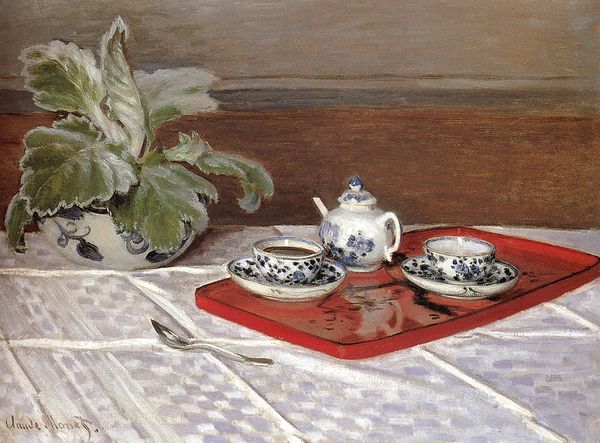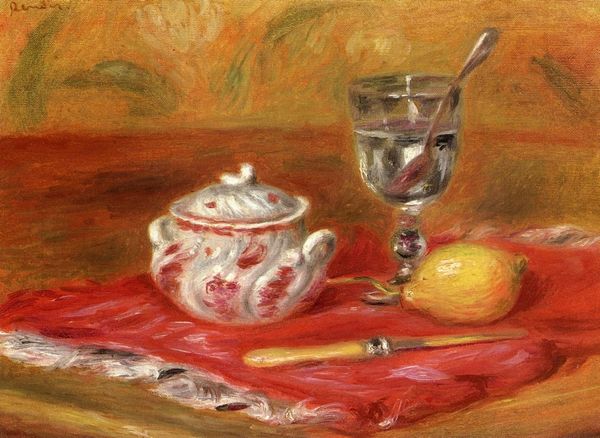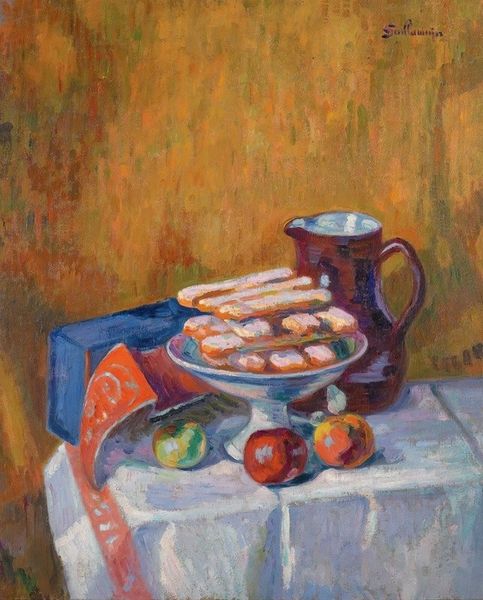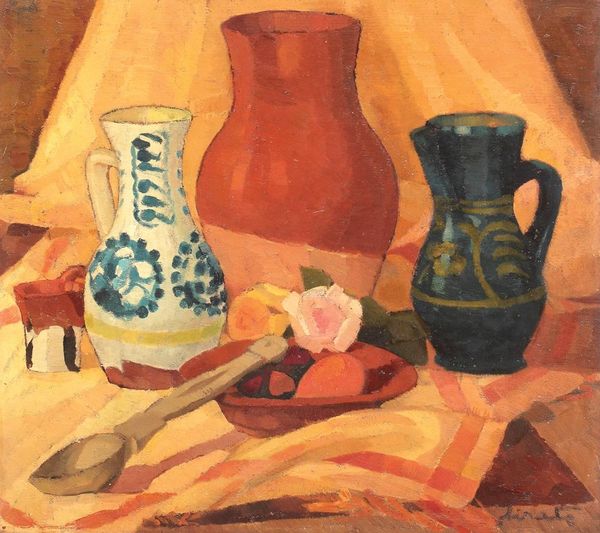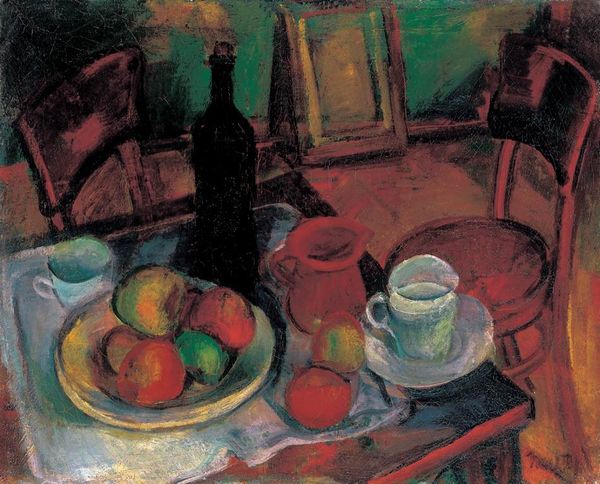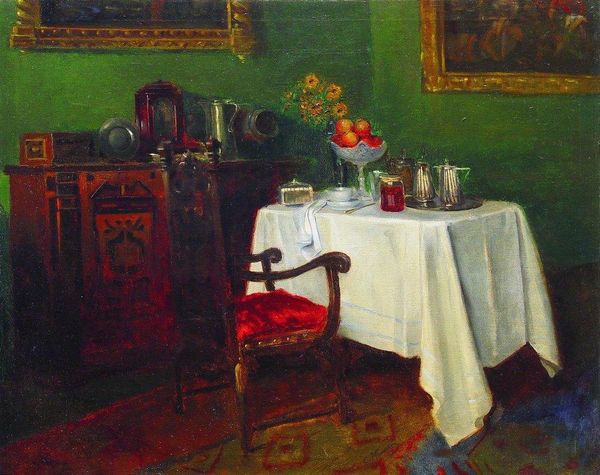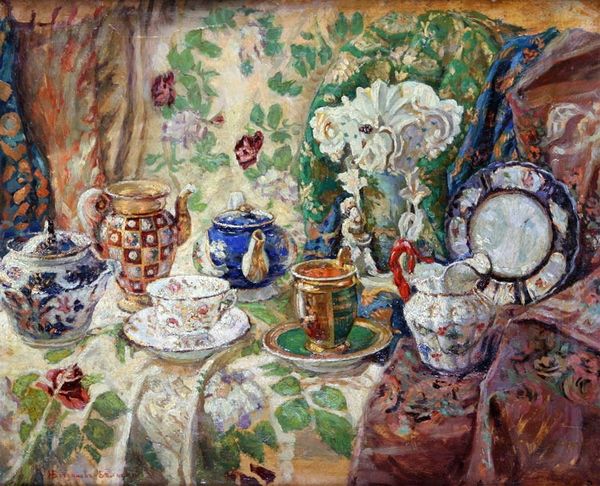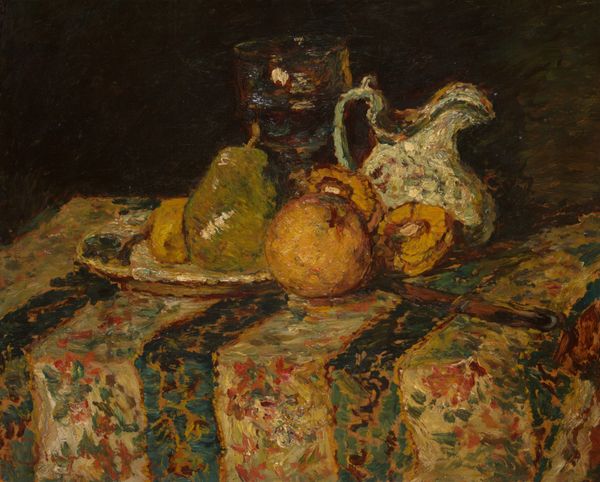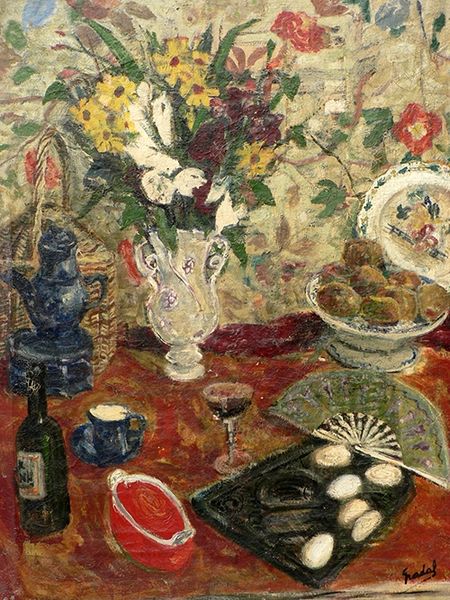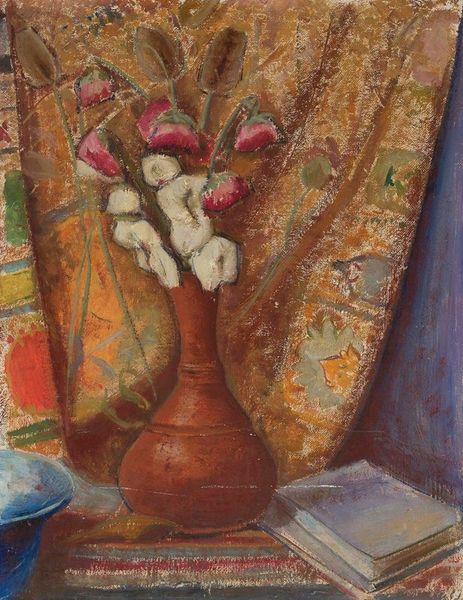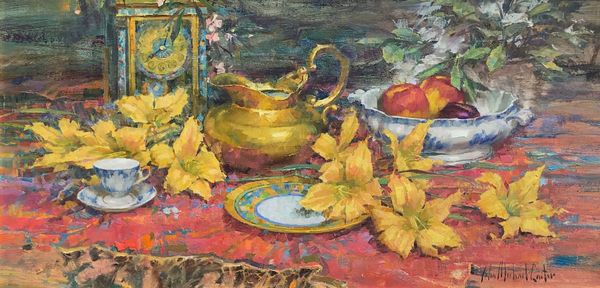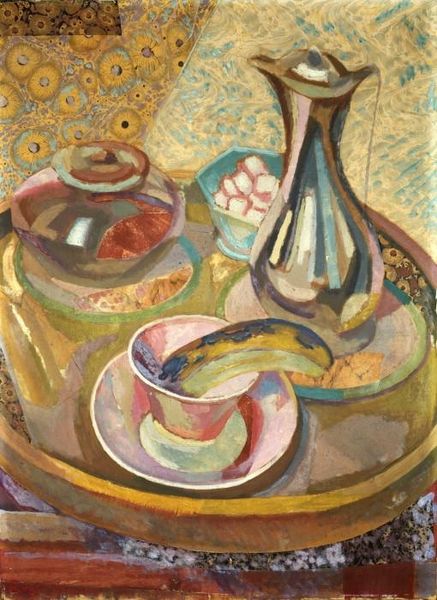
oil-paint, impasto
#
oil-paint
#
oil painting
#
impasto
#
painting art
#
post-impressionism
#
watercolor
#
realism
Copyright: Public domain
Curator: Looking at this still life, painted with oils by Ferenczy Károly in 1911 and titled "Kalács and Blue Porcelain," I can’t help but feel drawn into the intimate setting, a glimpse into a quiet, bourgeois existence, somehow comforting. Editor: Immediately I notice the tension between luxury and domesticity, signaled through objects: a glazed and braided loaf set off against carefully chosen and rendered blue porcelain on what appears to be a handcrafted, richly patterned textile. Curator: Right, there’s something to be said about his treatment of light—how it gleams off the porcelain and softly illuminates the challah's crust. Ferenczy isn't just painting objects, he’s almost immortalizing a feeling of contentment. Editor: But it’s precisely these "feelings" that become commodified. We consume experiences through art, just like the rich colors and textures available on the table in the form of commodities. I want to know the history of these objects! Were they family heirlooms? mass produced objects? Did they signal wealth, tradition, and taste? Curator: Perhaps both, since I understand Károly was well-traveled, so possibly all three! Considering his connection with the Nagybánya artists' colony, that interest in light and outdoor scenes made its way into his still lives as well. The textures really emphasize its painterly qualities. Editor: Texture definitely conveys the physical act of making, layering— the literal consumption and labor necessary to present such finery, a slice of turn-of-the-century middle class in Eastern Europe. The bread and tea become artifacts here, imbued with all this meaning, which has material roots in production, trade, class divisions... Curator: True. There’s a certain intimacy communicated as well, something I pick up with the carefully arranged objects: the braid and weave, as if someone stepped away to leave it untouched. Almost meditative, and makes one contemplate what would come next! Editor: I agree; it becomes a silent record that begs material investigation and I think Ferenczy might have intended that from the viewer to consider our labor and place in the chain of artistic and commodity production! Curator: Exactly, both the act of eating and contemplation become, for me at least, the same process in art! It’s lovely. Editor: Absolutely, an exquisite capture with many layered material contexts!
Comments
No comments
Be the first to comment and join the conversation on the ultimate creative platform.
